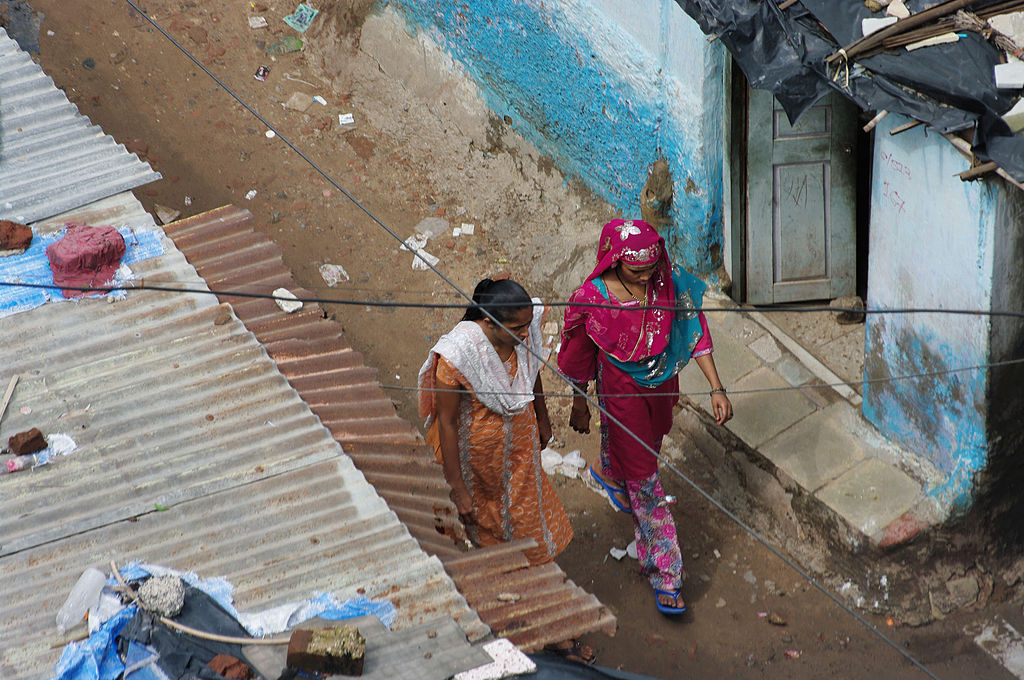Together, rapid urbanization and the lack of formal housing for people contribute to the global development of large informal settlements.
Informal settlements and poverty alleviation

The UN Habitat Programme defines informal settlements as:
- residential areas where a group of housing units has been constructed on land to which the occupants have no legal claim, or which they occupy illegally;
- unplanned settlements and areas where housing is not in compliance with current planning and building regulations (unauthorized housing).
The quality of air, drinking water, sanitation and hygiene are often poor, and food storage, cooking facilities and heating very basic. Access to health services, transportation, open space, education and employment are limited, while overcrowding can contribute to insecurity, epidemics and other social problems.
SDG11 (make cities and human settlements inclusive, safe, resilient and sustainable) in target 11.1 states “By 2030 ensure access for all to adequate, safe and affordable housing and basic services and upgrade slums”. Local governments can play a crucial role in achieving this goal by ensuring social inclusion, security of tenure, equitable access to public, health and social services and provision of educational and economic opportunities to residents.
Below are 5 programmes on the use platform being implemented by local governments to upgrade informal settlement and slums and improve the quality of life for residents.
The urbanization of Barrio 31 - Buenos Aires, Argentina
Villa 31, one of the oldest informal settlements in Argentina is primarily made of up of migrants and numbers over 40,000 people who live in some 10,000 poorly constructed buildings. Villa 31 is separated from the formal city by architecture and infrastructure barriers and historically has not received basic municipal services such as sanitation, clean water, public transportation or street lighting. The Barrio 31 initiative includes strategies to guarantee social, educational, health, economic and cultural rights of the population.
Lusaka 2030: a city without slums – Lusaka, Zambia
Lusaka is one of the fastest developing cities in southern Africa and has a growing population of urban poor living in slums and informal settlements. This project seeks to encourage local government and community cooperation around issues of city planning, the provision of public services and slum upgrading.
https://use.metropolis.org/case-studies/know-your-city-a-city-2030-city-without-slums
Slum Electrification Programme – Ahmedabad, India
Approximately 40 percent of Ahmedabad’s 5.6 million inhabitants live in slums and informal settlements, mostly without any public service provisions including clean water, sanitation or electricity. Only a small number of households have legal electricity connections most households are connected to unsafe illegal systems of electricity. The aim of the project is to remove illegal power lines in streets and homes and connect poor households to the electricity grid. In return participating households are granted a minimum de-facto tenure of ten years and financial assistance to pay connection fees.
https://use.metropolis.org/case-studies/ahmedabad-slum-electrification-program
Community Resilience through Women in Leadership Roles – Dhaka, Bangladesh
The slum dwellers living in Bhola Bastee come from different areas of the Barishal district of Dhaka. Due to river erosion they have lost their property, resources and shelter. The Participatory Development Action Program (PDAP) works with people, especially women, adolescents and children, whose lives are dominated by extreme poverty, illiteracy and disease to provide them with economic, educational and social opportunities while promoting human rights, dignity and gender equality.
https://use.metropolis.org/case-studies/community-resilience-through-women-leadership
Medellin’s Metrocable – Medellin, Colombia
The Metrocable is a gondola lift system implemented by the City Council of Medellin with the purpose of providing a free public transportation service to residents of the city's informal settlements located on the steep hills that surround the city. Commencing operations in 2004, it now carries up to 30,000 people daily and is operationally integrated into Medellín's mass transit system, which includes the overground Metro, The BRT (bus rapid transit system) and a tramway line.
https://use.metropolis.org/case-studies/medellin-s-metrocable
For more programmes and policies related to informal settlements and alleviation of poverty, search the use data base by SDGs or topic – informal settlements and poverty alleviation: https://use.metropolis.org/search